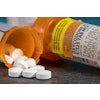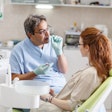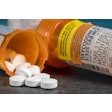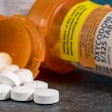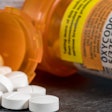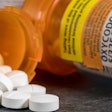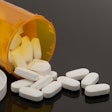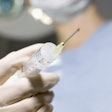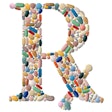
The U.S. spent $135 billion on dental services in 2018, according to a March 2 report from the U.S. Centers for Disease Control and Prevention (CDC) on the health status of the nation. The whopping sum was just one of several dental trends outlined in the report.
The CDC's National Center for Health Statistics summarized healthcare spending, workforce statistics, and numerous other factors that influence oral and overall health in the U.S. While some areas are going well, others are cause for concern.
Below are four charts illustrating key trends from the report.
1. Dental spending reaches $135.6 billion
U.S. spending on dental services reached $135.6 billion in 2018, the highest level yet. Dental services spending increased by 4.6% from 2017, and U.S. spending in that category has grown considerably in the past decade.

Even as spending on dental services has increased, dental services have shrunk in proportion to U.S. healthcare spending overall. In 2018, dental services accounted for 4.4% of the $3.08 trillion the U.S. spent on healthcare overall. That percentage was 5.1% in 2008.
"From 2008 to 2018, the proportion of personal healthcare spending decreased for prescription drugs, nursing care facilities and continuing care retirement communities, and dental and physician and clinical services, while increasing for hospitals and home health care," the report noted.
The $3.08 trillion the U.S. spent on healthcare in 2018 is over $1 trillion more than the amount spent in 2008. Hospital care (38.8%) and physician and clinical services (23.6%) accounted for the majority of healthcare spending, followed by prescription drugs (10.9%).
2. E-cigarette use has exploded among high schoolers
The use of electronic cigarettes (e-cigarettes) has exploded among high school students, according to data in the report. In 2018, more than 20% of high schoolers said they had used an e-cigarette in the past 30 days.

"Increases in e-cigarette use contributed to the increase in any tobacco product use among high school students during 2017-2018, erasing the decrease in any tobacco product use observed since 2011," the report noted.
At the same time, the use of traditional cigarettes has declined for both high school students and adults. Between 2008 and 2018, the age-adjusted percentage of adults who smoked cigarettes decreased by an average of 0.7 percentage points per year.
3. The number of dentists is growing -- but not evenly
The number of professionally active dentists in the U.S. grew by 3.3% from 2009 to 2019. In 2019, there were 61.06 professionally active dentists per 100,000 people -- up from 59.13 dentists in 2009.

However, the supply of dentists in each state varied widely, ranging from 104 dentists per capita in the District of Columbia to just 40.97 per capita in Arkansas. In general, states near the Gulf Coast had a lower supply of dentists, while those on the West Coast or in the Mid-Atlantic region had a higher supply of dentists.
Although the number of dentists increased, it didn't necessarily become easier for Americans to access dental care, the report noted.
"Despite having 200,419 professionally active dentists in the United States in 2019, the Health Resources and Services Administration notes that as of December 2019, more than 57 million Americans live in areas designated as having a shortage of dental health professionals," according to the report.
4. Drug overdose deaths have stagnated
After years of skyrocketing drug overdose deaths, the numbers appear to have leveled off. It's still unknown whether overdose-related deaths have peaked or if they will continue to climb with the COVID-19 pandemic.

In 2018, 67,367 people died from drug overdose deaths -- a 4.6% decrease from the 70,237 drug overdose-related deaths in 2017. But drug overdose deaths are still drastically higher than in 2008 when 36,460 people died of an overdose-related death.
Opioids are still the largest driver in drug overdose deaths and remain a public health concern, the report noted. These drugs accounted for nearly 70% of drug overdose deaths in 2018.
"This category continued its pattern of driving changes in the overall drug overdose death rate in recent years," according to the report.


